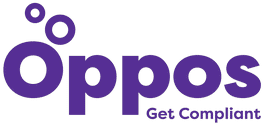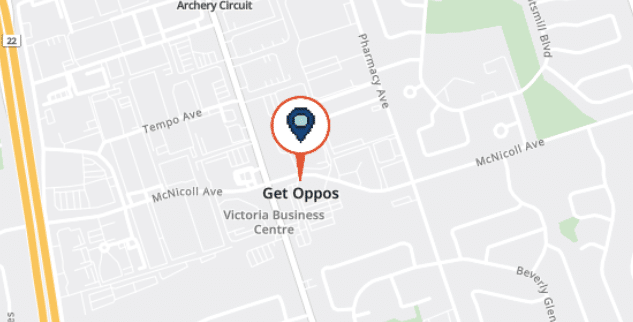Maintaining HIPAA compliance is crucial for any organization that handles protected health information. With the ever-increasing importance of data security and privacy, it is essential to have the right tools in place to ensure that your organization meets all the necessary requirements.
Whether you are a healthcare provider, a business associate, or a covered entity, this article will provide you with a complete list of HIPAA compliance tools that can help you safeguard sensitive patient information and avoid costly breaches. Read on to discover the tools that will help you achieve and maintain HIPAA compliance.
In this Guide

What is HIPAA Compliance Testing?
HIPAA compliance testing refers to the process of assessing whether an organization’s systems, policies, and procedures comply with the requirements set forth by the Health Insurance Portability and Accountability Act (HIPAA). HIPAA is a federal law in the United States that sets standards for the protection of sensitive patient health information.
Compliance testing is essential for organizations in the healthcare industry, as it helps ensure the privacy and security of patient information. The testing process involves evaluating various aspects of an organization’s operations to identify any potential vulnerabilities or areas of non-compliance. This includes reviewing technical safeguards, physical security measures, administrative processes, and employee training programs.
The goal of HIPAA compliance testing is to identify and address any weaknesses or gaps in an organization’s systems and processes that could lead to the unauthorized disclosure or misuse of patient information. By conducting regular compliance testing, organizations can demonstrate their commitment to protecting patient privacy and avoiding costly breaches or penalties.
There are several methods and tools available for conducting HIPAA compliance testing. These may include vulnerability scanning, penetration testing, policy and procedure reviews, and employee training assessments. Organizations may choose to conduct the testing internally using their own resources or engage the services of a third-party provider specializing in HIPAA compliance testing.
It is important to note that HIPAA compliance testing is an ongoing process rather than a one-time event. As technology advances and new threats emerge, organizations must continuously monitor and assess their systems and processes to ensure ongoing compliance. Regular testing helps organizations stay up to date with changing regulations and proactively address any potential vulnerabilities before they can be exploited.
HIPAA Compliance Checklist
Top HIPAA Compliance Tools
Accountable HQ
Accountable HQ offers a range of features designed to streamline the compliance process. With its user-friendly interface, organizations can easily navigate through the various components of HIPAA compliance, including risk assessments, policies and procedures, employee training, and incident management.
One of the standout features of Accountable HQ is its customizable risk assessment tool. This tool allows users to assess potential risks, identify vulnerabilities, and implement appropriate safeguards to protect patient health information (PHI). By conducting regular risk assessments, organizations can proactively address any potential security threats and ensure the confidentiality, integrity, and availability of PHI.
Accountable HQ also provides a comprehensive set of policies and procedures templates that are tailored to meet HIPAA requirements. These templates can be easily customized to reflect the specific needs of your organization, saving valuable time and resources. Additionally, the platform offers employee training modules that cover the key aspects of HIPAA compliance, ensuring that all staff members are knowledgeable about their responsibilities and obligations.
In the event of a security incident or breach, Accountable HQ offers an incident management feature that allows for efficient and timely response. This feature includes incident tracking, documentation, and reporting, which are crucial for maintaining compliance and fulfilling reporting obligations under HIPAA.
Interfacing Technologies
Interfacing Technologies offers a comprehensive set of features and functionalities that make it the ultimate tool for ensuring HIPAA compliance. With its user-friendly interface and powerful capabilities, it simplifies the complex process of compliance, allowing healthcare organizations to focus on delivering high-quality patient care.
One of the key features of Interfacing Technologies is its ability to automate the documentation process. With its intuitive document management system, organizations can easily create, revise, and distribute compliant policies and procedures. This eliminates the need for manual paperwork and minimizes the risk of error, ensuring that all documentation is up to date-and in line with HIPAA regulations.
Another notable feature of Interfacing Technologies is its robust risk assessment and management capabilities. It allows organizations to identify potential risks and vulnerabilities in their systems and processes and provides a comprehensive framework for managing and mitigating those risks. This ensures that the organization is proactive in addressing any potential compliance issues before they become serious problems.
Interfacing Technologies also offers a secure and encrypted platform for storing and transmitting patient data. Its advanced encryption algorithms and secure data storage practices ensure that sensitive patient information is protected at all times. This gives healthcare organizations peace of mind knowing that they are taking every possible measure to safeguard patient privacy.
Furthermore, Interfacing Technologies provides continuous monitoring and auditing functionalities to ensure ongoing compliance. It enables organizations to regularly assess their compliance status, identify any areas of non-compliance, and take corrective actions as necessary. This proactive approach helps organizations stay ahead of regulatory changes and maintain a high level of compliance at all times.
HIPAA E-Tool
The HIPAA E-Tool is specifically developed to facilitate the implementation of the administrative, physical, and technical safeguards required by HIPAA. It provides healthcare professionals with a centralized and user-friendly interface to manage and monitor their HIPAA compliance efforts.
With the HIPAA E-Tool, healthcare organizations can efficiently conduct risk assessments, create and implement policies and procedures, and track workforce training and compliance activities. The tool offers a range of customizable templates and resources that can be tailored to the specific needs of the organization.
One of the key features of the HIPAA E-Tool is its ability to generate comprehensive reports and documentation. These reports can be used to demonstrate compliance to auditors and regulatory authorities, providing evidence of the organization’s commitment to protecting patient information.
In addition, the HIPAA E-Tool includes built-in tools for incident management and breach response. In the event of a security incident or data breach, the tool guides healthcare organizations through the necessary steps to mitigate the risk, assess the impact, and report the incident as required by HIPAA.
HIPAAMATE
HIPAAMATE provides a range of features and tools to assist in achieving HIPAA compliance. One key aspect of the software is its ability to perform risk assessments and identify any potential vulnerabilities in an organization’s systems or processes. This can help healthcare organizations proactively address any weak points and ensure the protection of patient data.
Another important feature of HIPAAMATE is its documentation and training capabilities. The software allows users to create and maintain policies and procedures that align with HIPAA requirements. It also offers training modules for employees, helping them to understand their responsibilities under HIPAA and stay up to date with any changes in the regulations.
HIPAAMATE also includes incident management features, allowing healthcare organizations to track and respond to any breaches or security incidents that may occur. The software helps in investigating the incident, documenting the steps taken to address it, and implementing measures to prevent similar incidents from happening in the future.
Overall, HIPAAMATE is a powerful tool for healthcare organizations looking to ensure compliance with HIPAA regulations. With its comprehensive features and user-friendly interface, it simplifies the complex process of achieving and maintaining HIPAA compliance, giving healthcare professionals peace of mind when it comes to protecting patient information.
Healthicity Compliance Manager
With Healthicity Compliance Manager, organizations can easily track and manage compliance tasks, generate comprehensive reports, and monitor compliance across multiple departments and locations. The software provides a centralized platform where users can document policies and procedures, conduct risk assessments, and implement corrective action plans.
One of the key features of Healthicity Compliance Manager is its robust library of customizable compliance content. The software includes pre-built templates and policies that can be tailored to fit specific organizational needs. This saves time and effort by eliminating the need to create compliance documents from scratch.
Healthicity Compliance Manager also offers automated workflows and notifications to keep users informed of upcoming deadlines and tasks. This helps organizations stay proactive in their compliance efforts and ensures that no critical compliance activities are overlooked.
In addition, the software includes powerful reporting capabilities that allow users to generate detailed compliance reports in just a few clicks. These reports provide valuable insights into an organization’s compliance status, identify potential areas of risk, and facilitate decision-making processes.
Med Trainer
Med Trainer is a comprehensive online training platform specifically designed for healthcare professionals. It provides a wide range of courses and resources to enhance the skills and knowledge of medical staff, ensuring high-quality patient care and compliance with industry regulations.
With Med Trainer, healthcare professionals can access a vast library of interactive training modules covering a variety of topics, including clinical skills, patient safety, regulatory compliance, and professional development. The courses are developed by seasoned industry experts and are regularly updated to reflect the latest guidelines and best practices.
The platform offers a user-friendly interface, allowing users to easily navigate through the course catalog and select the relevant training modules. Each course consists of engaging multimedia content, such as videos, quizzes, and interactive simulations, ensuring an immersive and effective learning experience. Additionally, Med Trainer provides comprehensive tracking and reporting tools, enabling administrators to monitor the progress and compliance of their staff.
One of the key features of Med Trainer is its ability to customize training programs to meet the specific needs of healthcare organizations. Administrators can tailor the courses by adding organization-specific policies and procedures, ensuring that the training aligns with the unique requirements of their facility.
Med Trainer also offers a robust certification program, allowing healthcare professionals to earn Continuing Education (CE) credits upon completion of the courses. These certificates are recognized by accrediting bodies and can contribute to professional advancement and re-licensing requirements.
HIPAAtrek
HIPAAtrek offers a range of features and tools that are essential for HIPAA compliance. These include risk assessment tools, policies and procedures templates, incident management, employee training, business associate management, and more. The platform also provides a centralized dashboard that allows organizations to track their compliance progress and identify any areas that may need additional attention.
HIPAAtrek is built on a secure and scalable infrastructure that ensures the safety and integrity of PHI. The platform is easy to navigate and can be customized to meet the specific needs of each organization. It provides clear guidance and support throughout the compliance process, helping organizations save time and resources.
With HIPAAtrek, healthcare organizations and businesses can streamline their compliance efforts and have confidence that they are meeting the requirements of HIPAA. The platform helps to minimize the risk of data breaches and penalties and ensures that patient information is protected at all times. Whether you are a small medical practice or a large healthcare system, HIPAAtrek is the ideal solution to simplify and strengthen your HIPAA compliance program.
Key Components of an Effective HIPAA Compliance Program
An effective HIPAA compliance program requires several key components to ensure the protection of sensitive health information. These components are essential for healthcare organizations to not only meet the requirements of the Health Insurance Portability and Accountability Act (HIPAA) but also to establish a robust framework for safeguarding patient data.
The first key component is the development of comprehensive policies and procedures that address all aspects of HIPAA compliance. This includes policies that outline how patient information is collected, stored, and shared, as well as procedures for handling potential breaches or violations. These policies and procedures should be regularly reviewed and updated to reflect changes in technology, regulations, and best practices.
Another crucial component is employee training and education. All staff members who have access to patient information must receive training on HIPAA regulations, data security, and privacy practices. This training should occur upon hiring and be regularly reinforced to ensure that employees are aware of their responsibilities and understand the importance of protecting patient data.
A third essential component is ongoing risk assessment and analysis. Healthcare organizations must regularly assess the potential risks and vulnerabilities to the confidentiality, integrity, and availability of patient information. This includes conducting regular audits of systems and processes, identifying areas of weakness, and implementing necessary controls to mitigate risk.
Additionally, a robust incident response and breach notification process should be in place. This includes having a defined plan to handle any breaches or security incidents promptly and effectively. It is essential to have a clear process for investigating and containing incidents, as well as a notification protocol to inform affected individuals and relevant authorities, as required by law.
Lastly, regular monitoring, auditing, and enforcement of HIPAA compliance are critical components of an effective program. This involves reviewing access logs, conducting periodic internal audits, and implementing measures to ensure compliance with HIPAA regulations. Any identified gaps or non-compliance issues should be promptly addressed and remediated.
In conclusion, an effective HIPAA compliance program requires comprehensive policies and procedures, ongoing employee training, regular risk assessments, a robust incident response process, and consistent monitoring and enforcement. By implementing these key components, healthcare organizations can establish a strong foundation for protecting sensitive patient information and maintaining compliance with HIPAA regulations.
Common Reasons Why People Fail HIPAA Compliance
Conclusion
In summary, this article provided a comprehensive list of HIPAA compliance tools to help healthcare organizations meet regulatory requirements. These tools cover a wide range of areas including risk assessment, data encryption, access control, and incident response. To stay informed about the latest tips and best practices for HIPAA compliance, subscribe to our newsletter. If you need personalized assistance with HIPAA compliance, please don’t hesitate to contact Oppos cybersecurity for a consultation.
Don't wait – secure your data and boost customer confidence with Oppos' HIPAA Compliance.
HIPAA Compliance FAQs
HIPAA can apply to businesses and business associates of all sizes so there is still a benefit to them using compliance software to help make compliance easier.
The consequences of non-compliance can include both civil and criminal penalties. Civil penalties can range from $100 to $50,000 per violation, with a maximum annual penalty of $1.5 million for each provision of the HIPAA Privacy or Security Rule. These fines can add up quickly, especially if multiple violations occur.
Criminal penalties can also be imposed for certain types of non-compliance. Willful neglect of HIPAA can result in fines ranging from $50,000 to $250,000 and up to 10 years of imprisonment.
The frequency at which HIPAA compliance should be reviewed or audited can vary depending on several factors, including the size of the organization, the complexity of its operations, and the level of risk associated with its data. However, it is generally recommended that organizations conduct a comprehensive review or audit of their HIPAA compliance at least once a year.
First and foremost, healthcare providers should look for software that offers robust data encryption and security features. In addition to data security, healthcare providers should consider the software’s ability to enforce HIPAA policies and procedures. This includes features such as customizable policies, built-in templates for HIPAA documentation, and automated workflows for managing compliance tasks. The software should also have mechanisms in place to ensure that employees are trained on HIPAA regulations and are kept up to date with any changes. Lastly, healthcare providers should consider the software’s scalability and ease of integration with existing systems.
HIPAA compliance is crucial for maintaining the privacy and security of patient information. It requires a comprehensive approach that includes regular risk assessments, implementing appropriate policies and procedures, conducting employee training, and regularly auditing and monitoring systems.






